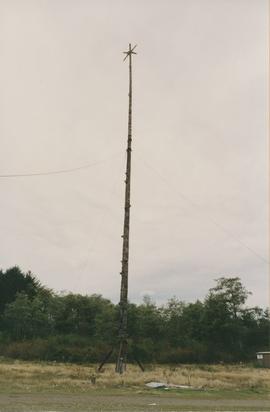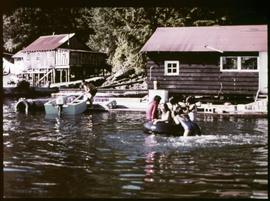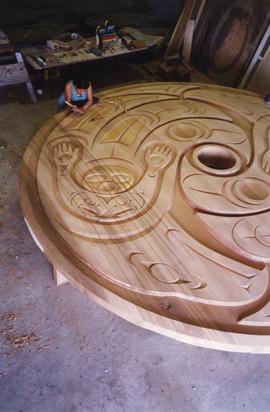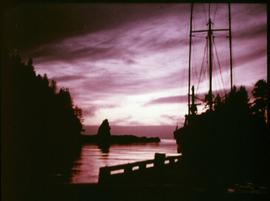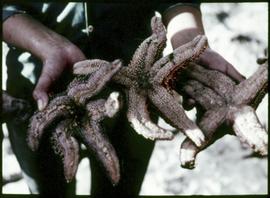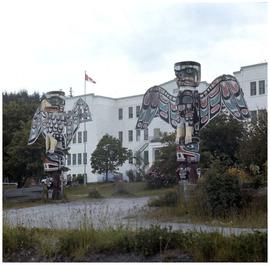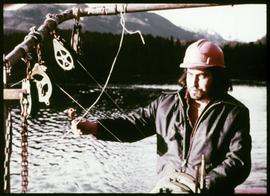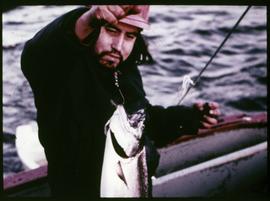- 148-02-a035846
- Item
- 1975 or 1976
A close-up image of a harbor seal on a wharf. According to the documentation included with the filmstrip, the description of the image states " Meet Charlie, a harbor seal, who lives in our cove. Charlie is eleven years old now, but she was a baby when this slide was taken. She was brought into the cove by seal hunters who had killed her mother. A local family adopted and raised Charlie, feeding her with a baby bottle until she was able to catch her own food. She lives year round in the cove, suns herself on our wharfs, and plays with the local children. Sometimes she sneaks into a fish camp and helps herself to a choice salmon. Everyone in Kyuquot loves Charlie."





